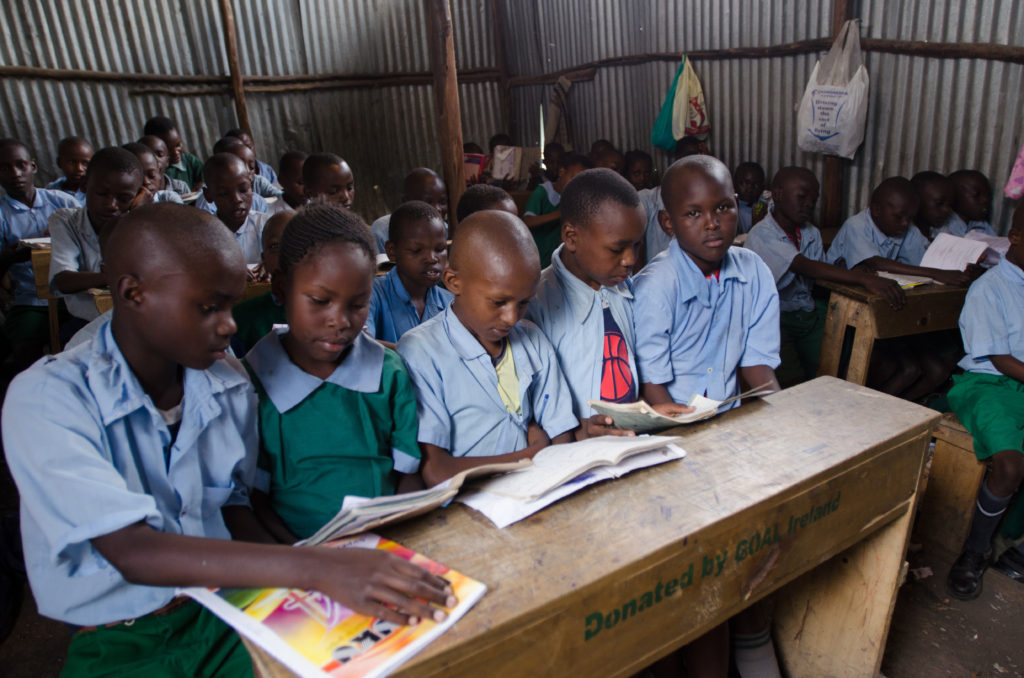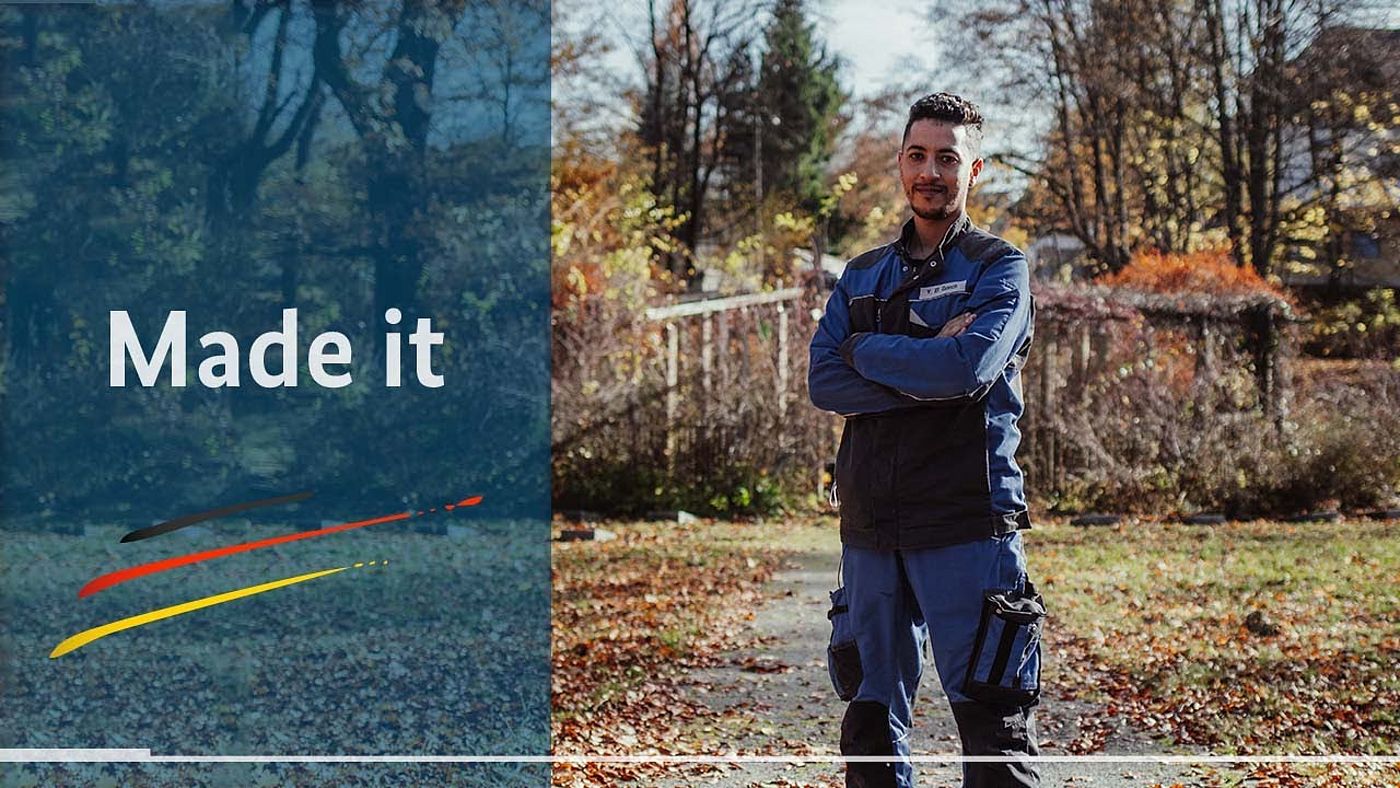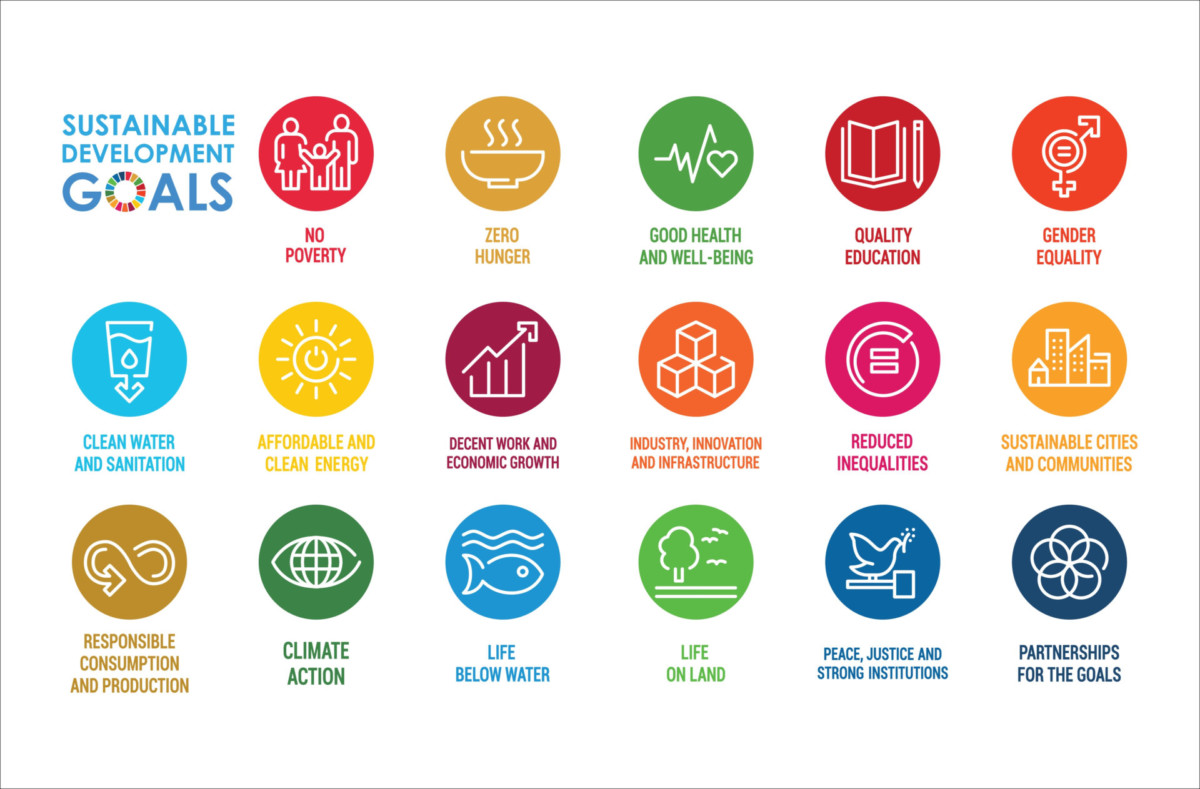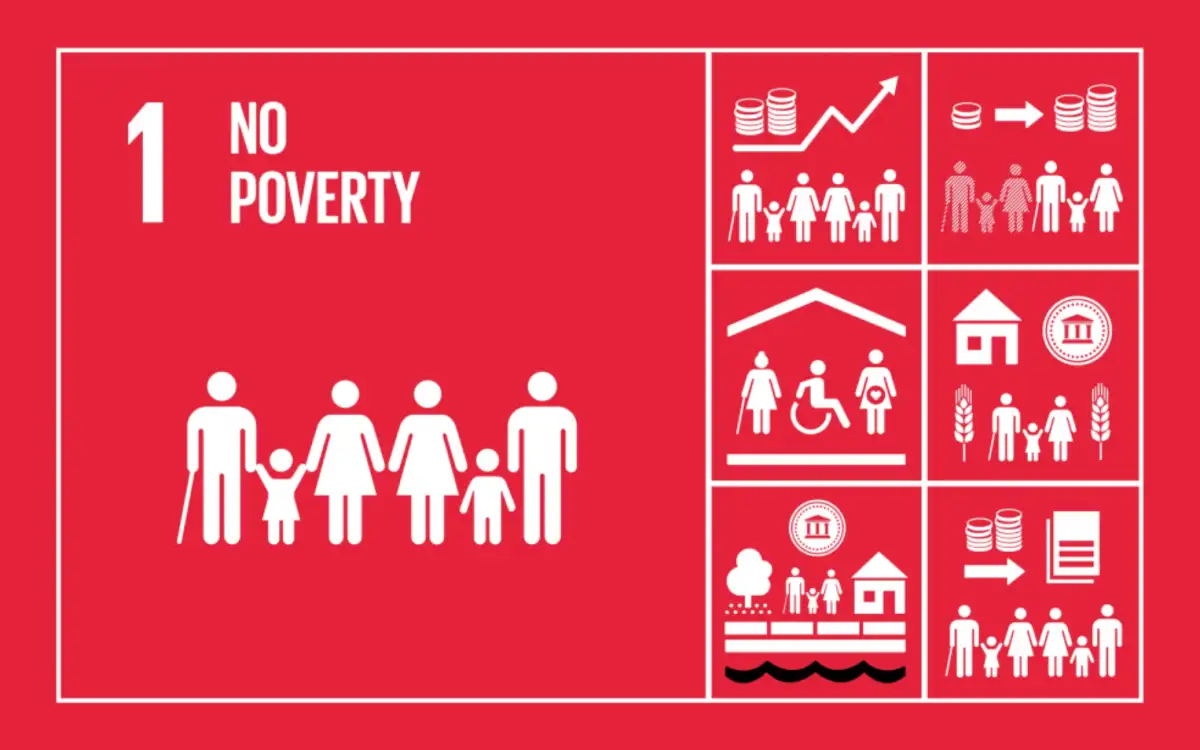The following case studies demonstrate how purpose-driven individuals, communities and organizations are contributing towards the actualization of SDG-01 No Poverty’ Initiatives
(1) Microfinance Projects in Bangladesh
Bangladesh has been a pioneer in microfinance, where small loans are given to individuals who don’t have access to traditional banking services.
This model empowers people, especially women, to start their own businesses, thus creating a source of income and improving their living standards.
The success stories are countless, with many families rising out of poverty due to their entrepreneurial spirit and the support of microfinance institutions.
(2) Poverty Alleviation Programs in Africa

Across Africa, various poverty alleviation programs have been implemented with a focus on providing education, healthcare, and economic opportunities.
These programs often involve partnerships between governments, NGOs, and the private sector, aiming to create a sustainable impact.
For example, in Kenya, the government’s cash transfer program for vulnerable children has shown promising results in improving the well-being of the most impoverished families.
(3) Inclusive Communities Program in Medellín, Colombia

Medellín, once known for its high crime rates and social exclusion, has transformed into a model city for inclusive urban development. Through the “Inclusive Communities Program,” the city has implemented policies and projects aimed at integrating marginalized communities into the urban fabric.
Key Initiatives:
- Development of public spaces like libraries and parks in marginalized neighborhoods.
- Implementation of social programs focused on education, health, and employment for disadvantaged groups.
- Community participation in planning and decision-making processes.
Impact:
- Improved social cohesion and reduced crime rates.
- Increased access to education and healthcare services.
- Empowerment of marginalized communities through active participation.
(4) Urban Upgrading Program in São Paulo, Brazil

São Paulo’s Urban Upgrading Program aims to improve the living conditions in informal settlements by providing basic services and infrastructure while promoting social inclusion.
Key Initiatives:
- Upgrading infrastructure such as water supply, sanitation, and electricity in informal settlements.
- Constructing community centers to offer educational and social programs.
- Involving residents in the planning and implementation processes.
Impact:
- Enhanced quality of life for residents of informal settlements.
- Increased access to essential services and social programs.
- Strengthened community bonds and participation.
(5) Social Integration Projects in Barcelona, Spain
Despite densities higher than Manhattan, the City of Barcelona is managing to find space to create a mosaic of new green spaces and reintroduce natural systems in its existing urban fabric.

Barcelona has implemented various social integration projects to support immigrants and marginalized groups. These projects aim to foster social cohesion and ensure equal opportunities for all residents.
Key Initiatives:
- Language and vocational training programs for immigrants.
- Social and cultural events to promote interaction between diverse communities.
- Support services such as legal aid and counseling.
Impact:
- Improved social integration and reduced discrimination.
- Greater access to employment and educational opportunities for marginalized groups.
- Enhanced sense of community and mutual understanding.
(6) Rural Roads Project in Kenya

The Kenyan government, in partnership with the World Bank, launched a Rural Roads Project to improve infrastructure in remote areas. The project aimed to enhance access to markets, education, and healthcare by constructing and rehabilitating rural roads.
Key Initiatives:
- Construction of new roads and rehabilitation of existing ones in rural areas.
- Training for local communities on road maintenance.
- Establishment of a monitoring system to ensure road quality and sustainability.
Impact:
- Reduced travel time and transportation costs.
- Increased access to education and healthcare facilities.
- Enhanced economic opportunities through better market access.
(7) Electricity Access Program in Bangladesh

The Bangladesh Rural Electrification Board (BREB) launched the Electricity Access Program to provide reliable electricity to rural communities, enhancing their quality of life and economic prospects.
Key Initiatives:
- Expansion of the national grid to rural areas.
- Installation of solar home systems in off-grid locations.
- Community engagement to promote the benefits of electricity and proper usage.
Impact:
- Improved access to education and healthcare services through reliable electricity.
- Enhanced economic activities and job creation in rural areas.
- Increased quality of life with better lighting, communication, and entertainment options.
(8) Water and Sanitation Project in India

The Swachh Bharat Mission (Clean India Mission) aims to improve sanitation infrastructure and promote hygiene practices across India, particularly in rural areas.
Key Initiatives:
- Construction of household and community toilets.
- Implementation of water supply systems in underserved regions.
- Public awareness campaigns on hygiene and sanitation practices.
Impact:
- Significant reduction in open defecation and improved sanitation standards.
- Better health outcomes due to increased access to clean water and sanitation facilities.
- Empowerment of communities through active participation in maintaining sanitation infrastructure.
(9) Anti-Corruption Drive in Rwanda

Rwanda has implemented a comprehensive anti-corruption strategy that has earned it recognition as one of the least corrupt countries in Africa. The strategy involves robust institutional frameworks, strict enforcement of anti-corruption laws, and active citizen participation.
Key Initiatives:
- Establishment of the Office of the Ombudsman to investigate and prosecute corruption cases.
- Implementation of a whistleblower protection program.
- Public awareness campaigns to educate citizens about the negative impacts of corruption and their role in combating it.
Impact:
- Significant reduction in corruption levels and improved public trust in government institutions.
- Enhanced efficiency and effectiveness of public services.
- Increased foreign investment and economic growth.
(10) Transparency International’s Advocacy in Brazil

Transparency International, a global anti-corruption organization, has been actively involved in advocating for transparency and accountability in Brazil. Their efforts have focused on exposing corruption and pushing for legal reforms.
Key Initiatives:
- Conducting corruption perception surveys to highlight the extent of the problem.
- Lobbying for stronger anti-corruption legislation and enforcement.
- Collaborating with local NGOs and media to increase public awareness and demand for accountability.
Impact:
- Greater public awareness of corruption issues and increased demand for government accountability.
- Strengthening of anti-corruption laws and improved enforcement mechanisms.
- Empowerment of civil society to participate actively in the fight against corruption.
(11) Singapore’s Corrupt Practices Investigation Bureau (CPIB)

Singapore’s CPIB is known for its stringent anti-corruption measures, which have made Singapore one of the least corrupt countries in the world. The bureau’s approach includes rigorous law enforcement, strong institutional frameworks, and a culture of zero tolerance for corruption.
Key Initiatives:
- Strict enforcement of anti-corruption laws with severe penalties for offenders.
- Implementation of preventive measures, such as risk assessments and anti-corruption training for public officials.
- Encouraging public participation in reporting corruption through hotlines and online platforms.
Impact:
- Exceptionally low levels of corruption and high levels of public trust in government.
- Enhanced business environment, attracting foreign investment and economic growth.
- Strong institutional integrity and a culture of accountability and transparency.
(12) Social Integration Projects in Barcelona, Spain
Barcelona has implemented various social integration projects to support immigrants and marginalized groups. These projects aim to foster social cohesion and ensure equal opportunities for all residents.
Key Initiatives:
- Language and vocational training programs for immigrants.
- Social and cultural events to promote interaction between diverse communities.
- Support services such as legal aid and counseling.
Impact:
- Improved social integration and reduced discrimination.
- Greater access to employment and educational opportunities for marginalized groups.
- Enhanced sense of community and mutual understanding.
(13) Conditional Cash Transfer Program in Brazil (Bolsa Família)

The Bolsa Família program in Brazil provides financial assistance to low-income families on the condition that their children attend school and receive regular health check-ups.
Key Initiatives:
- Providing monthly stipends to families in need.
- Monitoring school attendance and health check-ups for children.
- Offering educational and health support services to ensure compliance.
Impact:
- Increased school enrollment and attendance rates among children from low-income families.
- Improved health outcomes for children participating in the program.
- Reduction in intergenerational poverty through better educational attainment.
(14) Educate Girls in India
The Educate Girls program in India focuses on enrolling and retaining girls in schools, particularly in rural and marginalized communities.
Key Initiatives:
- Community mobilization and awareness campaigns to highlight the importance of girls’ education.
- Providing academic support and mentoring to girls.
- Collaborating with local governments to improve school infrastructure and resources.
Impact:
- Increased enrollment and retention rates of girls in schools.
- Enhanced educational outcomes and opportunities for girls.
- Empowerment of girls and their families, leading to broader social benefits.
(15) Kenya’s Free Primary Education Policy

Kenya’s government implemented a free primary education (FPE) policy to ensure that all children have access to basic education without the burden of school fees.
Key Initiatives:
- Abolishing school fees for primary education.
- Providing learning materials and resources to schools.
- Training teachers to accommodate the increased number of students.
Impact:
- Significant increase in primary school enrollment and attendance rates.
- Improved literacy and numeracy skills among children.
- Long-term economic benefits through a more educated workforce.
(16) Youth Employment Program in South Africa
The Youth Employment Service (YES) initiative in South Africa aims to create job opportunities for young people by partnering with businesses and providing them with work experience.
Key Initiatives:
- Partnering with businesses to create internships and entry-level job positions.
- Offering training and mentorship programs for young employees.
- Providing tax incentives and recognition for companies participating in the program.
Impact:
- Thousands of young people gaining work experience and skills.
- Increased employability of participants, leading to higher job placement rates.
- Strengthening the local economy by reducing youth unemployment.
(17) Microenterprise Support Program in Bangladesh
The Bangladesh Rural Advancement Committee (BRAC) runs a microenterprise support program that helps small business owners in rural areas start and grow their businesses.
Key Initiatives:
- Providing microloans and financial services to entrepreneurs.
- Offering training in business management, marketing, and financial literacy.
- Facilitating market access for small businesses through networking and partnerships.
Impact:
- Empowerment of entrepreneurs, particularly women, through financial independence.
- Job creation within local communities as businesses grow.
- Reduction in poverty levels as household incomes increase.
(18) Vocational Training for Disadvantaged Groups in Germany

Germany’s Dual Vocational Training System combines on-the-job training with classroom education, targeting disadvantaged groups to ensure they gain relevant skills for the job market.
Key Initiatives:
- Partnering with industries to offer apprenticeships and practical training.
- Providing theoretical education in vocational schools.
- Offering additional support services like career counseling and job placement assistance.
Impact:
- High employment rates among program graduates.
- Enhanced skill levels and job readiness of disadvantaged groups.
- Stronger links between education and industry needs, leading to economic growth.
(19) Community Health Worker Program in Ethiopia
Ethiopia’s Health Extension Program (HEP) employs community health workers to deliver essential health services in rural areas, focusing on preventive care and education.
Key Initiatives:
- Training and deploying health extension workers to provide basic health services and education.
- Conducting home visits to ensure access to healthcare in remote areas.
- Focusing on maternal and child health, hygiene, and disease prevention.
Impact:
- Improved health outcomes, particularly in maternal and child health.
- Increased access to healthcare services in underserved communities.
- Enhanced community health awareness and preventive practices.
(20) Telemedicine in Rural India

The Apollo Telemedicine Networking Foundation (ATNF) in India uses telemedicine to provide specialist consultations and medical services to rural and remote areas.
Key Initiatives:
- Setting up telemedicine centers equipped with video conferencing and diagnostic tools.
- Connecting rural patients with specialists in urban hospitals for consultations.
- Training local healthcare providers to assist with telemedicine services.
Impact:
- Improved access to specialist medical care for rural populations.
- Reduced travel time and costs for patients.
- Enhanced diagnosis and treatment outcomes through expert consultations.
(21) Mobile Health Clinics in the United States

Mobile health clinics in the United States, like the Family Van program, deliver healthcare services directly to underserved urban and rural communities.
Key Initiatives:
- Operating fully equipped mobile clinics that travel to different neighborhoods.
- Providing a range of services including screenings, vaccinations, and health education.
- Partnering with local healthcare providers to ensure continuity of care.
Impact:
- Increased access to healthcare services for marginalized populations.
- Early detection and management of chronic diseases.
- Improved health literacy and preventive care practices among community members.
(22) Rural Infrastructure Development in Vietnam

The Vietnamese government, with support from international donors, has implemented rural infrastructure projects to improve roads, bridges, and irrigation systems in remote areas.
Key Initiatives:
- Constructing and upgrading rural roads to enhance connectivity.
- Building bridges to link isolated communities with markets and services.
- Developing irrigation systems to support agriculture and increase food security.
Impact:
- Improved access to markets, education, and healthcare for rural populations.
- Increased agricultural productivity and food security.
- Enhanced economic opportunities through better transportation infrastructure.
(23) Water and Sanitation Project in Mozambique

The Rural Water Supply and Sanitation Program in Mozambique focuses on providing clean water and sanitation facilities to rural communities.
Key Initiatives:
- Installing wells and boreholes to provide clean drinking water.
- Constructing sanitation facilities to improve hygiene and health.
- Training communities in water management and maintenance.
Impact:
- Reduced incidence of waterborne diseases.
- Improved health outcomes and quality of life for rural residents.
- Empowerment of communities through sustainable water management practices.
(25) Energy Access Initiative in Sub-Saharan Africa
The Power Africa initiative aims to increase access to electricity in Sub-Saharan Africa through public-private partnerships and investment in energy infrastructure.
Key Initiatives:
- Developing and expanding electricity grids in underserved areas.
- Promoting renewable energy projects like solar and wind power.
- Providing technical assistance and capacity building for local energy providers.
Impact:
- Enhanced access to electricity for households, businesses, and public services.
- Improved economic development and job creation through reliable energy supply.
- Reduced reliance on harmful and inefficient energy sources like kerosene.
Emerging Partnership Opportunities:
Discover how you can leverage our Circles of Trust Framework to address the UN’s 17 SDGs.
We have done our best to curate and share outstanding case studies of SDG initiatives around the World that were successfully executed in the last 2 decades.
Be inspired to embark on a similar journey by leveraging our Circles of Trust framework.

- SDG-01: No Poverty (3)
- SDG-02: Zero Hunger (1)
- SDG-03: Good Health and Well-Being (1)
- SDG-04: Quality Education (1)
- SDG-05: Gender Equality (1)
- SDG-06: Clean Water and Sanitation (1)
- SDG-07: Affordable and Clean Energy (1)
- SDG-08: Decent Work and Economic Growth (1)
- SDG-09: Industry, Innovation, and Infrastructure (1)
- SDG-10: Reduced Inequalities (1)
- SDG-11: Sustainable Cities and Communities (1)
- SDG-12: Responsible Consumption and Production (1)
- SDG-13: Climate Action (1)
- SDG-14: Life Below Water (1)
- SDG-15: Life on Land (1)
- SDG-16: Peace, Justice, and Strong Institutions (1)
- SDG-17: Partnerships for the Goals (1)


Leave a Reply